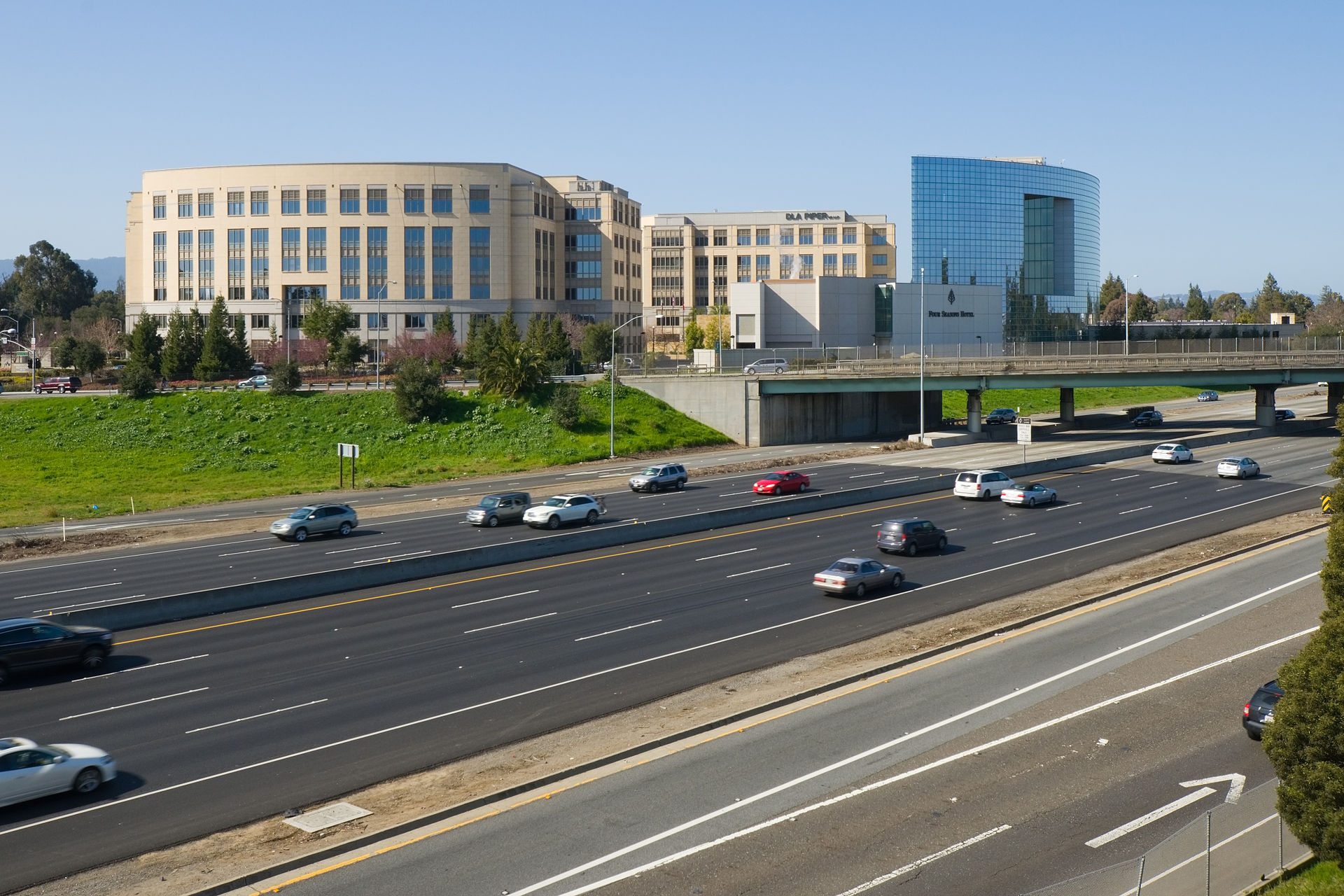In October, the East Palo Alto Public Works and Transportation Commission held a study session to discuss the work being done on the update to its Mobility Plan. Much of the discussion focused on plans to improve University Avenue, a street that suffers as a major cut-through for commuters. According to a traffic study, 84 precent of trips on East University Avenue neither originate or end in East Palo Alto.
The solutions discussed included the possibilities of adding either a reversible bus-only lane using existing median space or with a road diet, or adding bicycle lanes, or other improvements to make the street more pedestrian friendly. A discussion on how the city could capture some benefit from the high rate of cut-through car trips mentioned the possibility of encouraging car-free travel such as bike lanes or other pedestrian improvements.
There was also some discussion of exploring congestion pricing and variable tolling, although that discussion was brief as the City Council, Mayor, City Staff and consultants all agreed that such a proposal would be far out into the future after much discussion, outreach, political maneuvering, state legislation and planing and promotion by the city.
However, if one kept abreast of local news, they might be forgiven for believing tolling on University Avenue is right around the corner.
“East Palo Alto Looking into Making University Avenue a Toll Road,” blared the Palo Alto Daily Post, in a story that was amplified by local television news and even Planetizen. The Daily Post seems focused on this story: it’s the second one in four months on the not-very-active toll road discussion after a out of state real estate developer suggested it could help alleviate local traffic.

"That was just a study session, where people were encouraged to throw out and discuss ideas," said an exasperated Mayor Lisa Gauthier. "More importantly, what can we do to keep some of the cars from driving through the community at high rates of speed? Those are the types of things we're talking about...how do we manage that?"
While the idea of tolling University Avenue makes for great headlines, the coverage is a distraction from what the city might actually do in the near future. And that’s a shame, because as noted above, the city is planning for some interesting changes. Local transportation reform advocates are excited about the prospect of bus-only travel on University Avenue.
"The reversible bus lane could move buses more quickly through a congested corridor, and they sounded amendable to potentially using the median to create space for the bus lane," explains Adina Levin, a local transportation advocate with Friends of Caltrain.
"This is something that would take a significant amount of time to bring about, but in the study session the Council Members sounded positive about it. The idea will be coming back in December, when the Council will vote on actions taken as part of the mobility plan."
East Palo Alto has been known to be the more culturally diverse, and less economically affluent, brother to Palo Alto. However, in recent years there has been a demographic shift. In 1990, 43 percent of East Palo Alto's residents were African American, compared with just 15 percent today. However, the Latino population has grown to 65 percent and East Palo Alto is home to largest concentration of Pacific Islanders of any American city or town outside Hawaii. While East Palo Alto has benefited from the rising tech economy in surrounding cities, the concentration of tech jobs and Stanford University in Palo Alto has also made East Palo Alto a cut-through city.
In 2017, the City of East Palo Alto began a mobility study to improve conditions along University Avenue. University Avenue connects to freeways (State Route 84 and the US 101) before cutting south to Stanford University. Residents have long complained that the cut-through traffic, as the route serves large tech firms and the University. There was also a concern that there was not enough space for car parking.
In 2018, the city began its traffic study and a project to synchronize lights to increase through traffic times. The traffic study is being completed by Hexagon with input coming from FUSE Corps, a non-profit that pares fellows with cities to work on innovative solutions to problems such as transportation or climate change. To reduce car congestion, traffic lights throughout the corridor were retimed.
This year, studies for the full mobility plan were released and the city has begun voting on action items. Hexagon released a plan to add stop signs and crosswalks to 10 "high danger" intersections. Other studies are looking at a Transportation Demand Management plan for the region and a bicycle and pedestrian plan. A plan to possibly increase revenue and reserve parking for residents through a new parking plan was discussed by the city's public works and transportation commission in October.
And while congestion pricing, bus-only lanes, road diets and bike lanes make for fun headlines and articles, East Palo Alto is also looking at the basics.
"We also looked at enforcement," Mayor Gauthier continued. "If we have laws that say you can't turn left, it makes no sense to have those signs if we don't enforce those rules...I'm hearing from the community that people are using WAZE or something like that, are driving past schools at high rates of speeds, kids are almost getting hit. How do we reduce some of the traffic that is causing issues in the community?"
The congestion pricing discussion is a politically hot topic. A pair of congestion-priced Express Lane projects are under construction in the Silicon Valley: construction of the US 101 and State Route 85 Express Lanes Projects began earlier this year and State Route 237 Express Lanes Project should be opening soon. State legislation that would have allowed congestion pricing on Lombard Street in San Francisco was passed in the legislature before a surprise veto by Governor Gavin Newson.






